How to Optimize Facebook Advertising
Facebook advertising targets Facebook users with various Facebook ad types and placements based on interests, web activity, psychographics and demographics. Ads deliver eye-catching photos, valuable content, and calls to action tailored to your ideal customer profile. Create content that garners the attention, trust, and loyalty of Facebook users and converts them into paying customers.
Most small businesses fail at Facebook advertising because they find it too complex or are not executing the right strategy. Improve your chances of success with a little help from Hibu, our recommended Facebook advertising agency with proven results. They can create and manage Facebook advertising campaigns designed to create awareness or to generate new customers.
The seven steps for creating effective Facebook advertising include:
1. Create Your Facebook Business Page & Ad Account
Successful Facebook advertising campaigns begin with a professional Facebook business page including a descriptive “About” section, attractive images and cohesive branding. Facebook ads publish from your business page, creating an opportunity to teach people about your company and illustrate why they should choose you. Share content that’s both informative and interesting to attract and engage followers.
Elements to include when creating your Facebook business page include:
- Business information: Include details about what your business offers, where potential customers can find you online and in-person and how long you’ve been in business
- Profile picture and cover photo: The images you post on your Facebook page should represent your business and the services and products you offer; choose professional photos that share promotions, highlight team members and are consistent with your brand
- Objectives: Create your Facebook business page with an objective in mind; understand your business and advertising goals, the kinds of content you intend to publish and metrics for success before creating your page

Screenshot of FitSmallBusiness Facebook page.
Check out our article on how to set up a Facebook business page for a step-by-step guide to creating an engaging page. Plus, try our free Facebook page templates for small businesses.
2. Add Facebook’s Remarketing Pixel to Your Website
Remarketing is when you retarget Facebook users who previously engaged with your brand. Use this strategy on Facebook by adding code to your website, called a pixel, before beginning a Facebook ad campaign. The pixel tracks who you’re advertising to and helps you understand how your ads perform, which is information you can use when creating conversion ads.
RELATED: 5 Ways to Boost You Email Marketing List
You can set up the remarketing pixel yourself or hire someone to do it through Fiverr or another freelance website. If you would like to set this up yourself, get your pixel code by clicking on the top left side of the Facebook ads manager and selecting “Pixels.”
 Once you have the code, paste it somewhere on the backend of your website — likely on the “header” or “footer” — so it appears on every page.
Once you have the code, paste it somewhere on the backend of your website — likely on the “header” or “footer” — so it appears on every page.
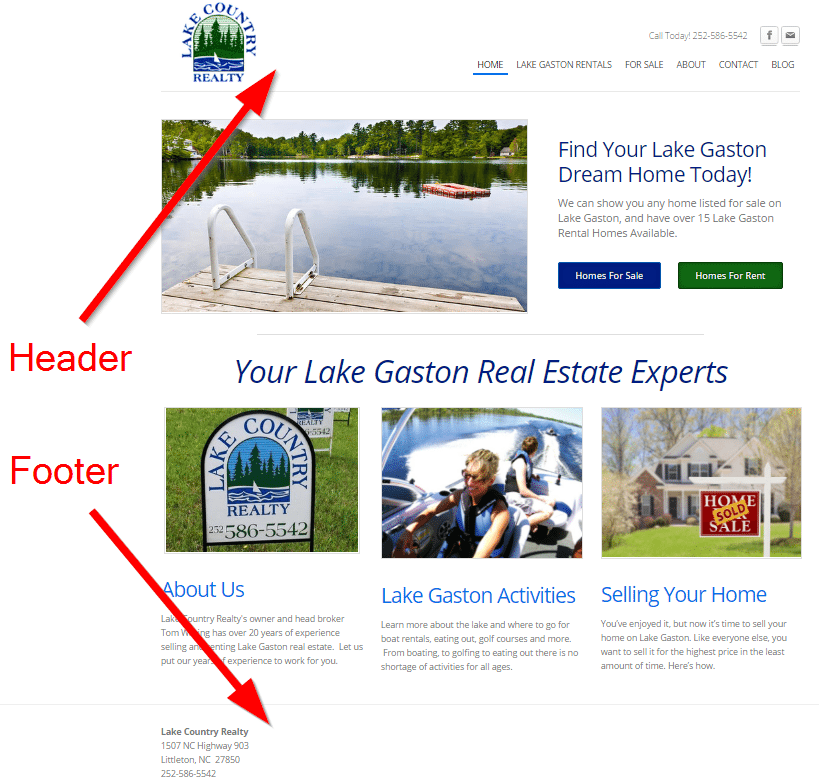
Screenshot of where to add pixel code on website.
The website we’re using as an example here is hosted on Weebly, so the screenshots below demonstrate where to paste the code on the backend of a Weebly website. YouTube demos are also available for how to add this code to a Weebly, Wix or WordPress website. If your website is hosted using a different service, find a tutorial by doing a Google search or find someone to do it for you on Fiverr.
For a Weebly website, paste the pixel code on the footer of the page. Click on the footer, and then drag the “Embed Code” icon and drop it into the footer.
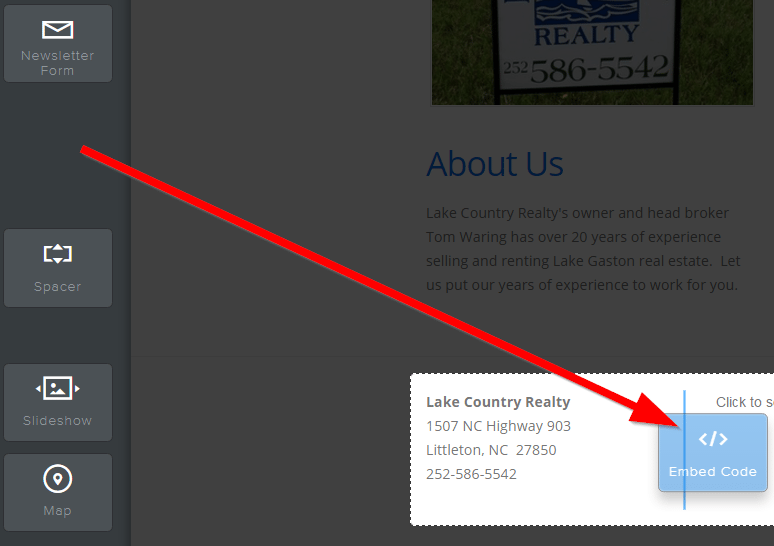
Screenshot of adding Facebook pixel code to website.
You will then be prompted to paste the code.
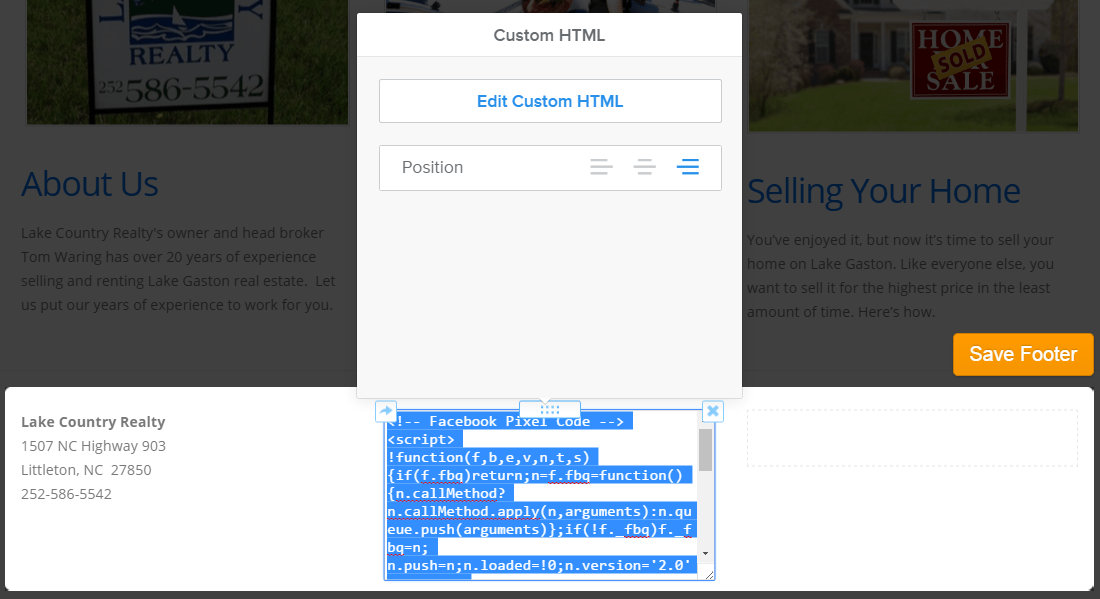
Screenshot of adding Facebook pixel code to website.
Once you paste the pixel code into your website, go back to Facebook and make sure it was installed properly. There will be a green dot next to your pixel name if the code is active. This will take a few minutes, so be patient.
To track people that go to a specific landing page, go back to where you found the Facebook pixel and click on “Create Audience.” You can then enter the keywords from that page’s URL and name the audience something descriptive of the people in the audience.

Screenshot of Adding Audience to Facebook Pixel

Screenshot of adding audience to Facebook ads.
Adding the pixel might be an intimidating step, but it’s an effective way to track Facebook user engagement and optimize your advertising campaigns. If you want the benefits of Facebook’s remarketing pixel but need help setting it up, check out Fiverr. Fiverr’s network of freelancers can help you install the Facebook pixel for as little as $5.
3. Choose an Advertising Objective
Facebook’s advertising platform categorizes ads into three objectives: awareness, consideration, and conversion. These objectives are meant to attract a user’s attention, earn their loyalty and convert them into paying customers. If you’re just starting to advertise on Facebook, start with awareness and build a relationship with your target audience gradually before progressing through consideration and conversion.
RELATED: 6 Ways to Increase Your Small Business’s Bottom Line
To start creating your Facebook ad, choose an advertising objective by clicking on the top right-hand section of your Facebook account where it says “Manage Ads.” Next, select the objective of your Facebook ad.
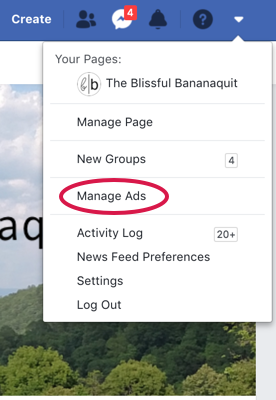
Screenshot of creating a Facebook ad.
The three general Facebook advertising objectives are:
Awareness
The best way to make people aware of your business on Facebook is to advertise a piece of content that is both related to your business’s product or service and interesting to your ideal customers. Create content that your followers are already used to seeing in their Facebook feeds, so sharing the content as part of an ad won’t feel intrusive. Use appealing content in your ads to create awareness and Facebook users will be more likely to interact with your brand.
Facebook’s awareness objective allows you to choose from the following goals:
- Brand awareness: First increase brand awareness by sharing interesting content with a tailored target audience
- Reach: Use one of Facebook’s reach ads to show your ad to the maximum number of Facebook users and track brand visibility and user engagement
Consideration
Once people are familiar with your business, you want them to trust you as an expert in your field so that they consider purchasing your product or using your service. The best way to do this on Facebook is to advertise a piece of content that demonstrates to your followers why you’re the best in the business. A consideration ad shows your ideal clients they should become customers of your business because you’re the best option out there.
As part of this advertising objective, you can choose from the following options:
- Traffic: Getting more traffic to your business’s Facebook page, website, app or Messenger conversation can increase brand engagement and make people consider buying your products or services
- Engagement: Consideration ads that include interesting and brand-specific information help increase engagement through likes, comments, shares, event responses and offer claims
- App installs: Use a consideration ad to send Facebook users directly to an app store to learn more about your product
- Video views: Videos are a useful and eye-catching way to highlight products, show potential customers how your business works, promote events and more
- Lead generation: Use consideration ads to collect valuable contact information from Facebook users who are interested in your business
- Messages: Let Facebook users contact you directly through Messenger to answer questions, complete purchases or otherwise increase engagement.
Conversion
Guide people through the funnel from awareness to consideration to create a more targeted audience that is genuinely interested in your ads and business. Once you attract these potential customers, create an ad that sells your product or service by including a call to action, like “Call for a Free Consultation.” Use this stage of advertising to attract your interested audience and then ask them to make a small commitment to increase the chances that they’ll follow through.
As part of this advertising objective, you can choose from goals including:
- Conversions: Use Facebook’s conversion ads to provide valuable information on your website, in the Facebook app or in Messenger, by adding payment information or making a purchase; you can then also use the Facebook pixel to track and measure conversions that result from the ad
- Catalog sales: Catalog oriented ads use tailored items from your catalog to appeal to your target audience
- Store visits: Use this tool to promote your business’s brick-and-mortar locations to customers in your area
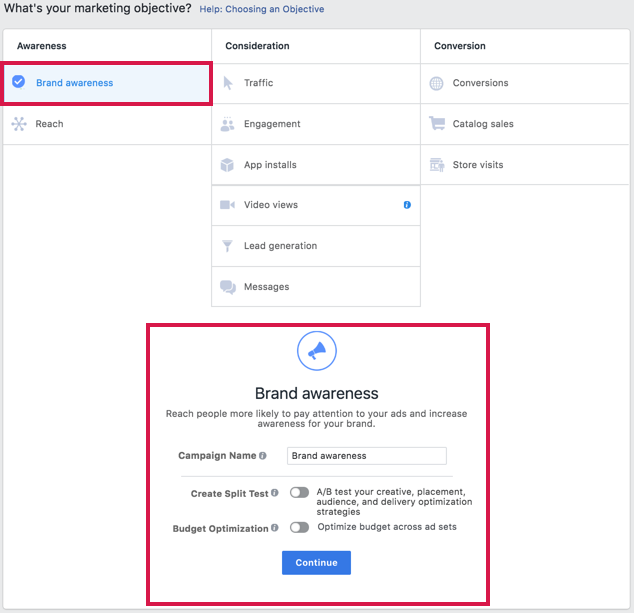
Screenshot of Facebook ad objectives.
4. Create a Targeted Audience
In Facebook advertising, your audience consists of the ideal customers you’re targeting with tailored content. Determine the demographics and psychographics of your ideal customers and choose a target audience around those elements. When chosen correctly, your ad’s audience will target your current or ideal clientele, attract them to your website and convert them into paying customers.
Identify Your Ideal Customer
Create a targeted audience for your Facebook advertising by developing a profile of your ideal customer using demographics and psychographics. Demographics are characteristics of a population like age, education level and marital status while psychographics describes psychological criteria like hobbies, spending habits and personal values. Use this information to identify your preferred clientele and then tailor your Facebook advertising campaign around that person.
RELATED: 6 Questions to Ask Yourself When Searching for New Business Ideas
To familiarize yourself with all of the audience targeting selections you can choose from, browse around the detailed targeting section. Audience targeting options include:
- Demographics: Target your Facebook ad based on demographics like age, gender, relationship status, education, workplace, job titles and more
- Location: If you have a brick-and-mortar business or provide services in certain geographic regions, choose the areas you want your ads to target
- Interests: Narrow your Facebook ad audience by targeting people based on their hobbies, favorite movies and bands, sports teams and more
- Behaviors: Make sure your ads are visible to people with purchase behaviors, device usage and other activities that are aligned with your business

Screenshot showing Facebook ad audience selection.
For more information on demographics and psychographics, check out our guide to creating customer profiles.
Determine Your Ad’s Potential Reach
Once you enter your audience criteria, Facebook calculates the “potential reach” of your ad. Potential reach is the estimated number of monthly active people on Facebook that match the audience we defined through the audience targeting selections. Cast a wide net to have a better chance of getting people that are interested enough to click on your link.
If you’re too specific, you’ll inundate the same small group with your ads; however, if you’re too broad, the ad will display for people with no interest in your business. A potential reach of around 250,000 is a good starting number.
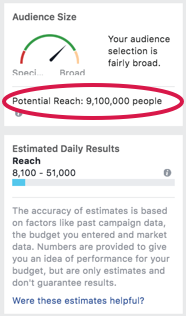
Screenshot showing reach of Facebook advertising.
This step can be overwhelming just because there are thousands of options to choose from. Facebook has information about where we live, who our friends are, what our interests are, how we like to interact, our purchasing history and so much more. If you want help setting up an audience that optimizes your Facebook ad, use Fiverr to hire a freelancer for as little as $5.
5. Choose Ad Placement & Budget
Determine where and when you want your ad to display and how much to pay for that placement. Choose whether your ad displays on mobile, desktop or both and whether it’s posted to Facebook, Instagram or other apps. Depending on your budget, determine how long your ad runs and how many people see it each day.
Selections you’ll need to make to choose your ad placement and budget are:
Device Type
You can choose to have your ad show on mobile, desktop or both. Choose for your ad to show on both types and Facebook will allocate funds automatically based on where they think your ad will perform best. If, after tracking your ad’s performance, you notice that one device converts better than the other, adjust future ads accordingly. Just remember that most people use mobile on Facebook, so make sure your ad and your website look good on a mobile device.
Platforms
There are three platforms where you can display your ad: Facebook, Instagram and Audience Network, which consists of third-party apps and mobile websites. Choose a platform based on your target audience or experiment with which platforms yield the most user engagement. This article focuses on Facebook ads only because we’re optimizing the ad based on how people use Facebook.
Daily Budget
Your daily budget for Facebook ads can start small at just $5 per day and then increase once you have more information about which ads and audiences perform best. Increasing your daily budget also increases the number of people who see your ad. For example, the $10 per day budget we set in our example exposes between 940 and 2,500 people to the content per day.
RELATED: 37 Top Sources for Small Business Insight
For more information on Facebook advertising costs, check out our industry-specific guide to Facebook ad costs.
Schedule
Facebook allows you to run your ad continuously or set a start and end date for the ad. Choose a schedule that fits within your weekly budget and that ensures that enough people have time to click on the ad before showing them your second ad. In the example below, we ran the ad from Thursday to Sunday, guaranteeing that the weekly budget doesn’t exceed $30 and allowing us to check back on Monday to evaluate which users clicked on the ad.
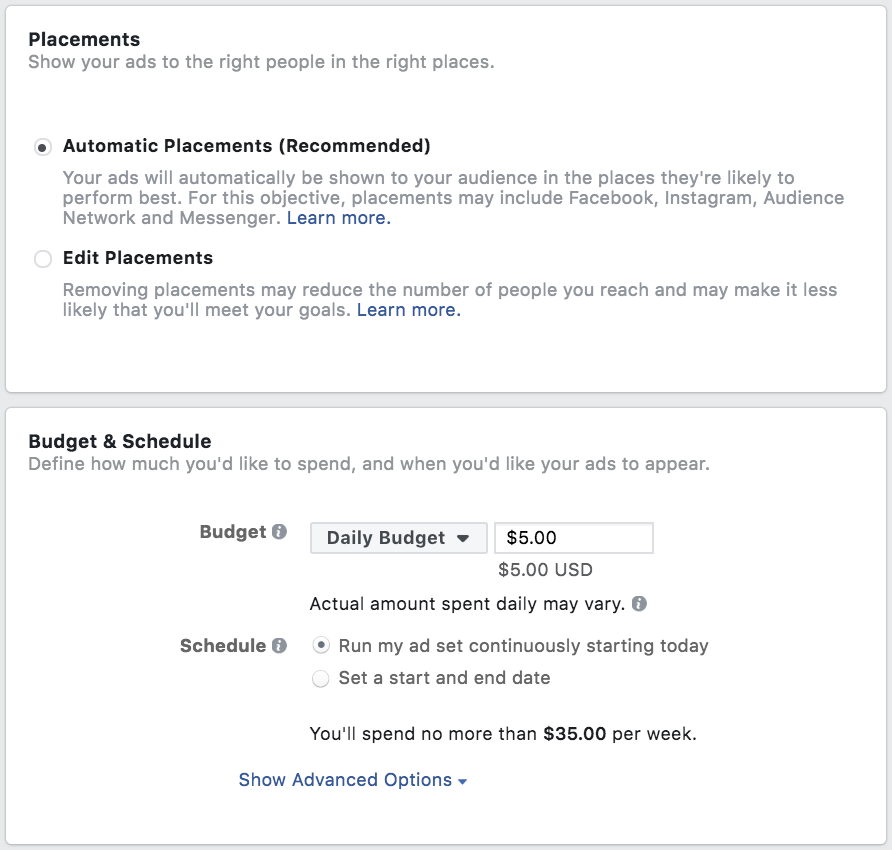
Screenshot of Facebook ad placement and budget selection.
6. Choose Your Facebook Advertising Format
Your Facebook advertising format determines how users view your content. Facebook ads can be published as a single image, carousel of several images, video or slideshow. Choose an ad format that will blend in and display like a post from a friend, so your audience isn’t turned off by your sponsored content.
The four Facebook advertising formats are:
- Carousel: This is an ad with between two and ten scrollable images or videos; when this type of ad appears in your news feed, it’s pretty obvious it’s an ad and not a post from a friend; this could work for some types of promotions, but it is not ideal for sharing an interesting article
- Single image: When people share articles on Facebook, the article is usually accompanied by a single image; because we want our ad to look as natural as possible, we will follow this same format in our example
- Single video: Videos are very engaging, so if you have the time it is definitely a good idea to test using an ad with a video; check out Fiverr to hire a freelancer to create professional video content
- Slideshow: This is an ad with a looping video and up to seven images
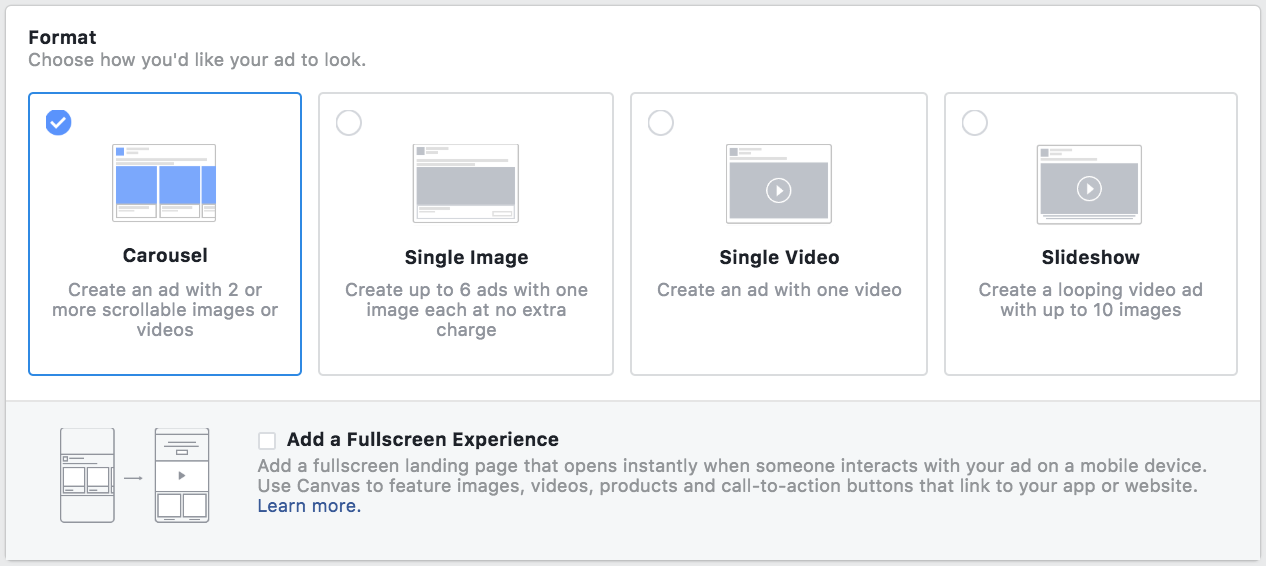
Screenshot of Facebook ad format options.
Once you choose an ad format, choose your image. Facebook lets us know that the recommended image size for this type of ad is 1200×628 pixels. You can also add text to your image. Canva is a great free resource where you can find images and set the size so that it is optimized for Facebook ads.
Our article on Facebook ad templates provides 25 ad templates from the pros. Plus, check out our Facebook ad examples for more inspiration.
7. Complete & Run Your Facebook Ad
After choosing your audience and uploading an eye-catching image, enter remaining details like your website’s URL, a catchy headline and explanatory text. Then, choose whether to include a call-to-action (CTA) button to increase engagement and review your ad to ensure it displays well on mobile and desktop devices. Once complete, simply run the ad.
Fill in Necessary Details
Once you set up the format of your ad and insert an appealing photo or video, add a URL if you’re sharing specific content as part of your ad. Complete the text of your ad by adding a brief yet informative headline and including a teaser for the article in the text box. The text of your ad should be interesting but not detract from the ad or giveaway the point of the content you’re sharing.
Choose a CTA Button
When finalizing your Facebook ad, you can choose to add a CTA button to attract Facebook users to your website or online store, get them to contact you and more. Use a CTA button if your objective is to build the loyalty of or sell to an existing audience. However, if your objective is still to build awareness of your business, skip the CTA to make your article look just like another one of your friends’ shared posts.

Screenshot of creating a Facebook advertisement.
Once you place your ad, check back in a few days to make sure you received enough clicks to start running the next phase of your advertising campaign — a consideration ad. You need to have at least 20 people in an audience to use a consideration Facebook ad.
Follow Up with a Consideration or Conversion Ad
If you began your Facebook advertising with awareness ads, build your audience and convert them into customers with consideration and conversion ads. Target Facebook users who engaged with your first ad with content to earn their trust and retain their interest. Then, get followers to provide contact information or a purchase that converts them into clients.
RELATED: 5 Hats a Solopreneur Has to Wear
One way to build trust with your audience and move them closer to becoming customers is with positive Facebook reviews. Podium is an online tool that makes it easy for you to text customers, review invitations with ready-to-send templates, get notified about new reviews, and manage and respond to reviews on your phone or desktop. Businesses that use Podium have received up to 15 times more reviews. Click here to watch a 3-minute demo.
Make Followers Consider You as an Expert
A consideration ad retargets your advertising on anyone who clicked on your awareness ad. Consideration ads build on interest generated by awareness ads and identify users most likely to spend money at your business. Increase your existing audience’s engagement and convince them to buy your product by sharing content that demonstrates why you’re the best.
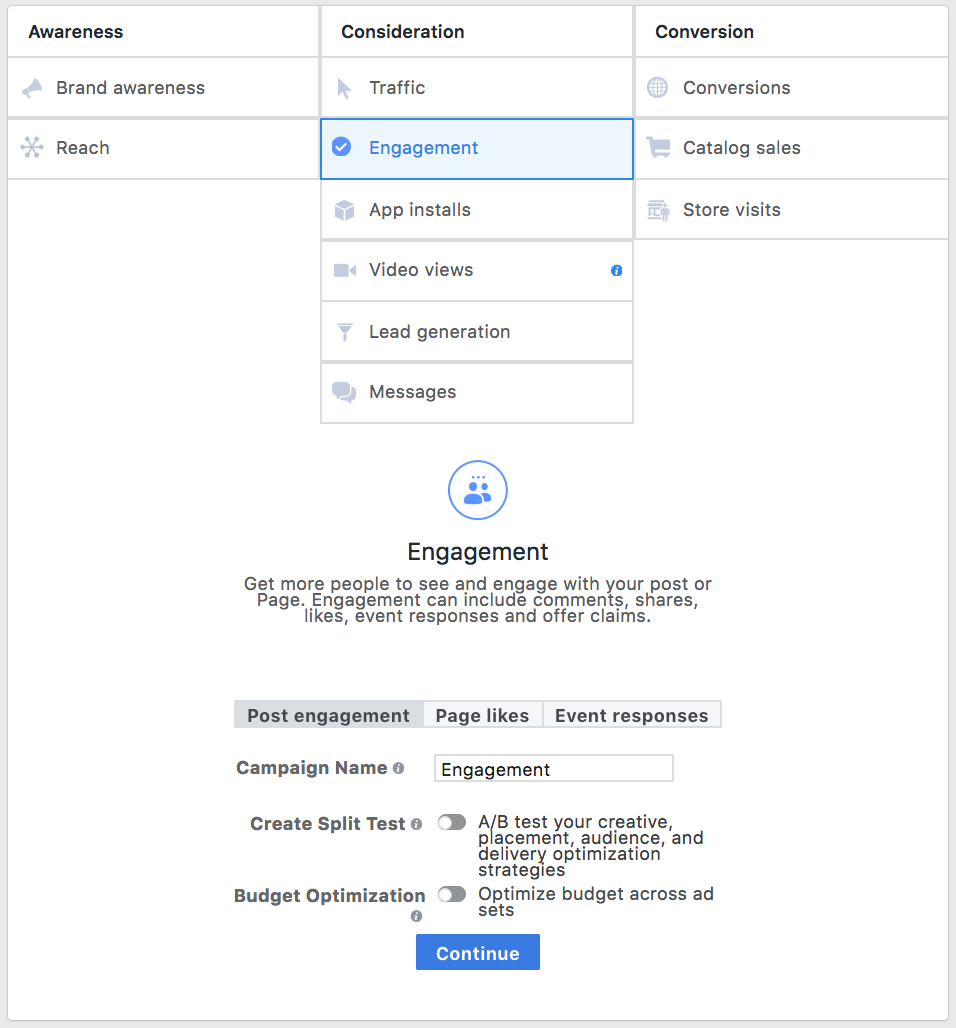
Screenshot of consideration ad objective.
Create your consideration ad the same way you created the awareness ad, but with two differences. First, choose a custom audience based on the users who demonstrated an interest in your awareness ad and then track people who click on the ad to create an audience for your conversion ad. This way the ad will only display for people who clicked on the awareness ad. Facebook will let you know how many people are in the audience when you select it.
In addition to setting up a new target audience, include new images and text and change the website URL to link to the new article. Choose content that demonstrates your expertise, like “5 Mistakes to Avoid When Purchasing a Vacation Home.” An article that highlights why your products or services are the best on the market will attract attention and convert potential clients into paying customers.
Convert Facebook Users to Clients
A conversion ad promotes a call to action targeted to members of the audience who clicked on your consideration ad. Optimize your ad by choosing the same audience you created for your consideration ad and use a CTA encouraging followers to engage with your brand. Including a CTA button lets you direct potential clients to a landing page on your website and capture their contact information quickly before they lose interest or run out of time.
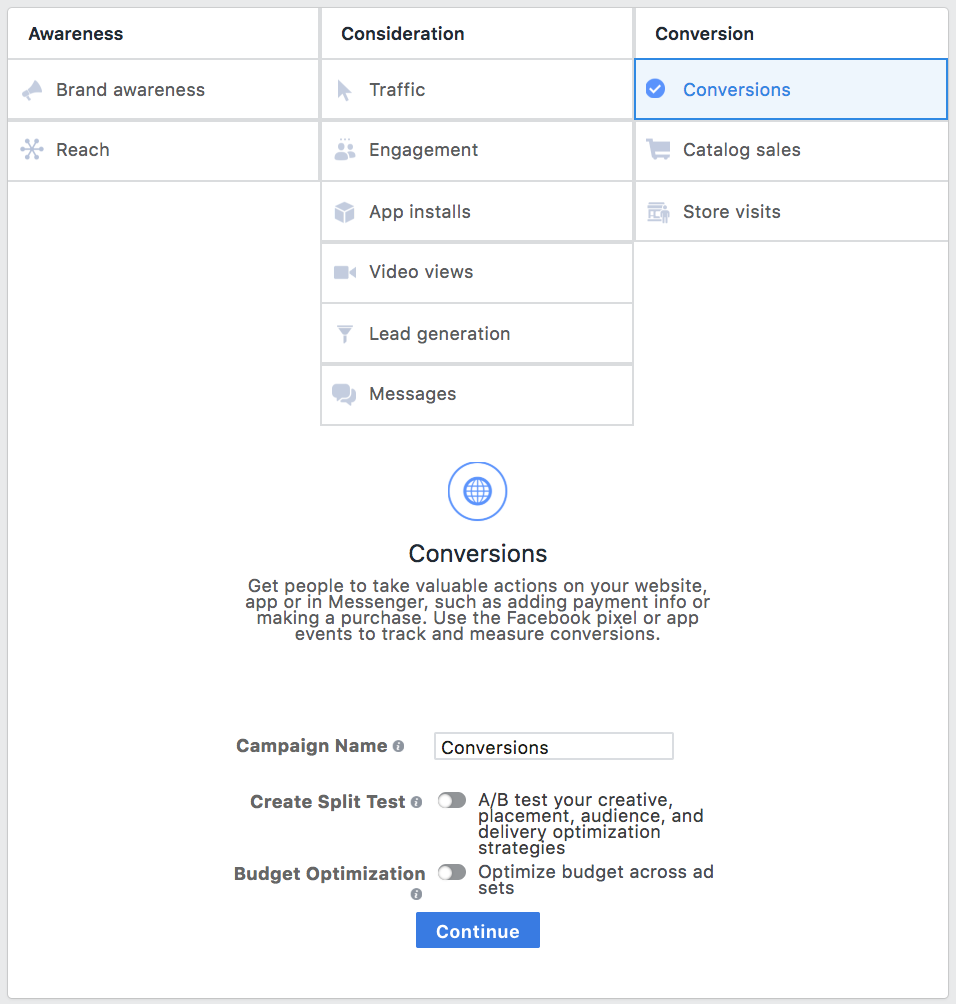
Screenshot of conversion ad objective.
To complete your conversion ad, insert a new image and enter a headline and description different from your other ads, so Facebook users don’t think they’ve already read the article and skim right past it. Then, evaluate whether your ad is converting Facebook users into paying customers effectively by tracking them with a specific phone number, promotional code or other methods. Check out our discussion of conversion tracking methods below.
Tips for Creating Effective Facebook Advertising
Tips for creating effective and attractive Facebook ads include:
- Choose an appealing image: The picture is the first thing that will catch the user’s eye; make sure that it stands out and will make people pause long enough to read the text of your ad
- Draft an informative headline: After you capture the user’s attention with an image, use the headline to tell them about your business
- Include actionable text: Include a CTA in the text portion of your ad; you can also give a teaser of what your ad is promoting to raise curiosity
- Test a variety of ad formats: Users respond differently to Facebook ads; experiment with photos, videos, and carousels as you develop your Facebook advertising strategy
If you need more tips on how to create effective Facebook ads, check out our guide to creating high-performance Facebook ads. You can also hire a Facebook-focused ad agency to help develop an advertising strategy for your business.
Facebook Ad Targeting Examples
There are thousands of ways you can target on Facebook, including a person’s age, gender and location, website activity and Facebook user likes and interests. Ultimately, your target audience depends on your business, your geographic location, and your ideal customer.
Men’s Clothing Store
If you have a men’s clothing store that specializes in business casual dress, target your Facebook ads to show only to college-educated, single men between the ages of 35 and 40. You can also specify that they live within 10 miles of your store.
Yoga Studio
If you want to advertise your yoga studio, you can target your Facebook ads to show only to females who attend the university near your studio. You can also specify an interest in yoga based on Facebook’s knowledge of their interests and activity on social media.
RELATED: 5 Major Mistakes That Could Derail Your Startup
Italian Restaurant
To advertise your Italian restaurant, target your Facebook ads to display only to working females between the ages of 20 and 45 who have children. You can also specify they live or work within 10 miles of your restaurant.
How to Tell if Your Facebook Advertising is Working
Determine whether your ads are effective using Facebook’s metrics to evaluate click-through rates (CTRs) and cost-per-click (CPC). If you’re trying to increase sales, include a tracking number or promotional code or use Facebook’s conversion pixel to track user activity. Monitor your Facebook ads to ensure you’re posting content that converts your audience into paying customers.
To evaluate how well your Facebook ads are working, go to the right-hand side of your account and click “Manage Ads.” From there, you can access the ads manager and see how well your ads are performing.
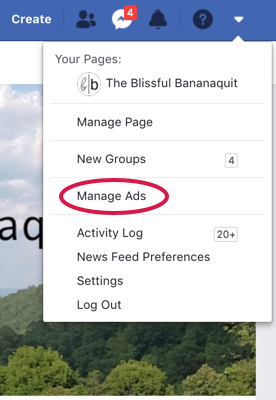
Facebook pull-down menu to manage ads.
Facebook metrics to consider when evaluating the effectiveness of an ad include:
- CTR: This is the number of people who clicked on your ad divided by the number of people who saw your ad; focus on the CTR for ads that are meant to drive traffic to your website
- Conversion rate: The conversion rate of your Facebook ad is the percentage of your audience who engage with your ad; this includes like your page, contacting you through the ad or otherwise clicking on your ad’s call to action
- CPC: This is how much you paid to get someone to click on your ad; for example, if 15 people click on your ad and your total ad cost was $15, your CPC is $1
According to The Facebook Ads Benchmark Report conducted by Salesforce, the average CTR for an article post is around 2%, and the average CPC is $.23. If you notice you’re not achieving these numbers, switch up your content until you figure out what kind of articles your audience engages with more consistently.
In addition to tracking the CTR and CPC for your Facebook ads, you should incorporate a tracking method into each of your conversion ads. If you have a real estate office or other business where you’re communicating with every customer directly, you can ask whether they learned about you through a specific ad. However, if you have an e-commerce website, it is more difficult to track ad conversion.
Methods to help determine conversion rates include:
- Tracking number: Use a phone number that is specific to your Facebook ads to determine whether someone called your business after seeing an ad; for example, if you own a restaurant, you can set up a specific phone number to track if people who call in to make a reservation are calling because they saw your ad on Facebook; check out our how-to guide for more information on how to set up call tracking
- Promotion code: If you are advertising a promotion in your conversion ad, provide a unique code for Facebook users to apply at checkout, which is a great way to track customers that come to your business after seeing your Facebook ad
- Conversion pixel: If you have an eCommerce website, set up the Facebook pixel to track sales that are made on your site; this enables you to see where your paying customers are coming from and whether the Facebook ad successfully converted your audience.
Tracking ad performance is extremely important because you need to know if your investment is paying off. If it’s not, tweak your strategy or overhaul it completely. You should also run several different types of ads so that you can measure which ones are most successful. Without monitoring CTR and CPC and tracking conversion rates, you won’t know what ads work best for your business.
How to Advertise on Facebook for Free
Facebook’s advertising platform is a paid service, so you can’t employ traditional Facebook advertising for free. However, you can market your business on Facebook with just your Facebook business page. Use your “About” section and profile pictures to share important information about your business and post interesting content and valuable promotions to attract and maintain followers.
For more information on how to market your business on Facebook for free, check out our guide to free and effective marketing campaigns.
The Bottom Line
Facebook advertising is an important component of your small business’s marketing and advertising approach. Used correctly, Facebook ads attract potential clients, earn their trust and loyalty and convert them into paying customers. Invest in Facebook advertising to expand your business’s reach to a targeted audience, increase brand engagement and drive people to your website or storefront.
SCHEDULE A CONSULTATION TODAY
Interested in learning about how to optimize Facebook advertising, starting a business or growing a business in Santa Barbara? Contact us today for your free business consultation! Call Santa Barbara Entrepreneur at our Impact HUB location (805) 633-0877.

